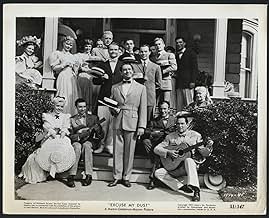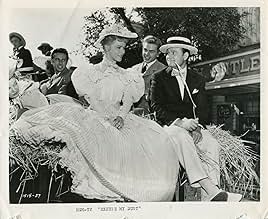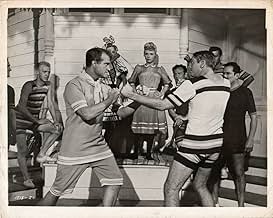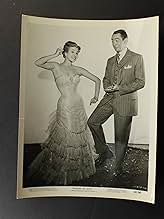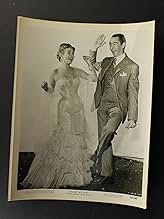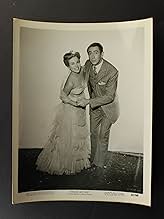AVALIAÇÃO DA IMDb
6,0/10
435
SUA AVALIAÇÃO
Adicionar um enredo no seu idiomaIn 1895, a small-town inventor faces ridicule over his gasoline-powered car. His girlfriend supports him, but success brings romantic complications. During a horseless vehicle race, he needs... Ler tudoIn 1895, a small-town inventor faces ridicule over his gasoline-powered car. His girlfriend supports him, but success brings romantic complications. During a horseless vehicle race, he needs his loyal girlfriend's help.In 1895, a small-town inventor faces ridicule over his gasoline-powered car. His girlfriend supports him, but success brings romantic complications. During a horseless vehicle race, he needs his loyal girlfriend's help.
- Direção
- Roteiristas
- Artistas
Herbert Anderson
- Ben Parrott
- (as Guy Anderson)
Jessie Arnold
- Woman on Street
- (não creditado)
Polly Bailey
- Woman on Street
- (não creditado)
Avaliações em destaque
It's 1895 Willow Falls, Indiana. Inventor Joe Belden (Red Skelton) is creating his gasomobile. It's a horse-less carriage. Only, it never seems to work and he sets his own barn on fire. Liz Bullitt is his girlfriend. Her horse ranch owning father is opposed to him and prefers her other suitor Cyrus Ransom, Jr.
The biggest name in the credits seems to be Buster Keaton as an uncredited writer and director. I do wonder about the story behind the scene. There are a lot of cooks in this kitchen. I would probably work harder on getting better songs. They're ok but rather old fashion. They are songs from the late 19th century to the jazz age. Red Skelton is doing the good-natured goof without going too wacky. There is a car race at the end. It's not the most exciting, but it is interesting to see all the old cars. This is a nice lesser musical with little lasting effect.
The biggest name in the credits seems to be Buster Keaton as an uncredited writer and director. I do wonder about the story behind the scene. There are a lot of cooks in this kitchen. I would probably work harder on getting better songs. They're ok but rather old fashion. They are songs from the late 19th century to the jazz age. Red Skelton is doing the good-natured goof without going too wacky. There is a car race at the end. It's not the most exciting, but it is interesting to see all the old cars. This is a nice lesser musical with little lasting effect.
Fans of Red won't find him doing one of his ditzy characters here. Instead, most of the comedy comes from the set-ups with Red reacting in often normal ways. He's an inventor, most importantly of one of the first gas-mobiles (cars), whose worth he's got to prove against defenders of the horse & buggy. At the same time, he's got to somehow wangle lady-love Sally Forrest away from her cranky old livery stable owner father, Bill Demarest. And it doesn't help that rival Macdonald Carey's out to sabotage Red at every turn. So there's plenty of plot to drive things along.
My guess is that the biggest attraction now are those picturesque old autos that amount to a real curiosity. The climactic auto race provides a good chance to sample the various experimental modes of propulsion, from steam to electricity to gasoline. Then too, some of the talk about polluting autos seems almost contemporary. Nonetheless, the rural picnic scenes are utterly charming and visually compelling, along with Monica Lewis' spirited warbling and Forrest's imaginative dance number. All in all, the movie's an unexpectedly interesting and lively slice of entertainment, though not the best showcase for Skelton's brand of slapstick humor.
My guess is that the biggest attraction now are those picturesque old autos that amount to a real curiosity. The climactic auto race provides a good chance to sample the various experimental modes of propulsion, from steam to electricity to gasoline. Then too, some of the talk about polluting autos seems almost contemporary. Nonetheless, the rural picnic scenes are utterly charming and visually compelling, along with Monica Lewis' spirited warbling and Forrest's imaginative dance number. All in all, the movie's an unexpectedly interesting and lively slice of entertainment, though not the best showcase for Skelton's brand of slapstick humor.
Red plays an inventor who has been working on building a very early internal combustion gasoline auto (the 1890s). However, he fails again and again and everyone in town thinks he's a nut. Late in the film he finally perfects his car and enters 'the big race' to prove everyone is wrong.
Red Skelton did some very charming and funny films. However, "Excuse My Dust" is a rare miss--mostly because the studio (MGM) wouldn't allow him to be who he was. Skelton was a comic--and one who had a great knack for getting the audience to like him. However, here the writers didn't respect Skelton for who he was and instead tried to fit him into the MGM mold--with lots of beautiful Technicolor and lots of songs. Skelton was not a singer (his voice wasn't bad but this was obviously NOT why he was in films) and they tried to make it a musical comedy not a comedy--a serious mistake. All too often, humor seems (at best) secondary and the film has very few laughs--too few. Additionally, the film had way too much plot--and often (such as during the big race near the end) the plot seemed more important than laughs or his character. So what we're left with is a pretty looking film with lots of music and few laughs. Because of this, I recommend you try one of his other films--such as "Watch the Birdie" or "The Yellow Cab Man".
Red Skelton did some very charming and funny films. However, "Excuse My Dust" is a rare miss--mostly because the studio (MGM) wouldn't allow him to be who he was. Skelton was a comic--and one who had a great knack for getting the audience to like him. However, here the writers didn't respect Skelton for who he was and instead tried to fit him into the MGM mold--with lots of beautiful Technicolor and lots of songs. Skelton was not a singer (his voice wasn't bad but this was obviously NOT why he was in films) and they tried to make it a musical comedy not a comedy--a serious mistake. All too often, humor seems (at best) secondary and the film has very few laughs--too few. Additionally, the film had way too much plot--and often (such as during the big race near the end) the plot seemed more important than laughs or his character. So what we're left with is a pretty looking film with lots of music and few laughs. Because of this, I recommend you try one of his other films--such as "Watch the Birdie" or "The Yellow Cab Man".
Red Skelton is an inventor in a small town in Indiana in 1895, anxious to invent a working automobile. He and Sally Forrest are in love. She is the daughter of William Demarest, the owner of a livery stable. His principal rival is Macdonald Carey. It all ends with a marvelous race among competing motorists that was directed by Buster Keaton, although Roy Rowland is the credited director.
There are various anachronisms that set my teeth on edge, like the use of the word "jass" -- for early jazz music. In reality, the word can't be traced back earlier than about 1912, and then it was in reference to baseball. Likewise, Miss Forrest is given a modern dance number, shoehorned into a dream sequence. If it seems to bear a relationship to the "Girl Hunt" number from THE BAND WAGON, well, Arthur Schwartz provided the music for three songs (with Dorothy Fields writing the lyrics) and Hermes Pan did the choreography.
There are fewer typical Red Skelton comic bits, but the final race is a fine series of comic disasters. By then, however, it was a little late in the show. Although it's worth watching, it's not one of Skelton's best starring vehicles. With Raymond Walburn, Jane Darwell, and Paul Harvey.
There are various anachronisms that set my teeth on edge, like the use of the word "jass" -- for early jazz music. In reality, the word can't be traced back earlier than about 1912, and then it was in reference to baseball. Likewise, Miss Forrest is given a modern dance number, shoehorned into a dream sequence. If it seems to bear a relationship to the "Girl Hunt" number from THE BAND WAGON, well, Arthur Schwartz provided the music for three songs (with Dorothy Fields writing the lyrics) and Hermes Pan did the choreography.
There are fewer typical Red Skelton comic bits, but the final race is a fine series of comic disasters. By then, however, it was a little late in the show. Although it's worth watching, it's not one of Skelton's best starring vehicles. With Raymond Walburn, Jane Darwell, and Paul Harvey.
In reviewing the so-called golden age of the MGM musical, sometimes it's instructive to bypass the big, accomplished, but pretentious famous titles (An American In Paris, The Band Wagon, On the Town, Kismet) and skip to the smaller movies produced by someone other than Arthur Freed. This 1951 tuner from the Jack Cummings unit is probably Red Skelton's best movie, which may not be saying much, but it's a very smart and pleasing little musical that doesn't wear out its welcome (it's a trim 80 minutes or so). Red's dopey slapstick is kept to a minimum (just two set pieces, at the beginning and the end), and what's in between is surprisingly gentle and well-written Americana -- in sunny Technicolor. The underrated score, by Dorothy Fields and Arthur Schwartz (who wrote another wonderful score for Broadway that year, the equally underrated "A Tree Grows In Brooklyn"), is solidly integrated into the plot, and the musical staging, by Hermes Pan, is bright and inventive. (The movie contains what may be the least plot-motivated "dream ballet" ever, but even it's quick and unpretentious.) Sally Forrest is pretty as a picture and a heck of a dancer, and Monica Lewis socks two comedy numbers across. They will help you past the dum-dum physical comedy that was Skelton's stock in trade.
It's no award-winner, nor did it do much at the box office, but it holds up much better than some of the bigger, weightier MGM titles.
It's no award-winner, nor did it do much at the box office, but it holds up much better than some of the bigger, weightier MGM titles.
Você sabia?
- CuriosidadesThe original "Morgan" automobile in Soberba (1942) was also used in this film.
- Erros de gravaçãoA few times during the race, wide tire tracks from more modern automobiles can be seen on the dirt roads.
- ConexõesFeatured in The Metro-Goldwyn-Mayer Story (1951)
- Trilhas sonorasI'd Like to Take You Out Dreaming
Music by Arthur Schwartz
Lyrics by Dorothy Fields
Performed by Macdonald Carey and Chorus
Principais escolhas
Faça login para avaliar e ver a lista de recomendações personalizadas
Detalhes
Bilheteria
- Orçamento
- US$ 1.789.000 (estimativa)
- Tempo de duração
- 1 h 22 min(82 min)
- Proporção
- 1.37 : 1
Contribua para esta página
Sugerir uma alteração ou adicionar conteúdo ausente



